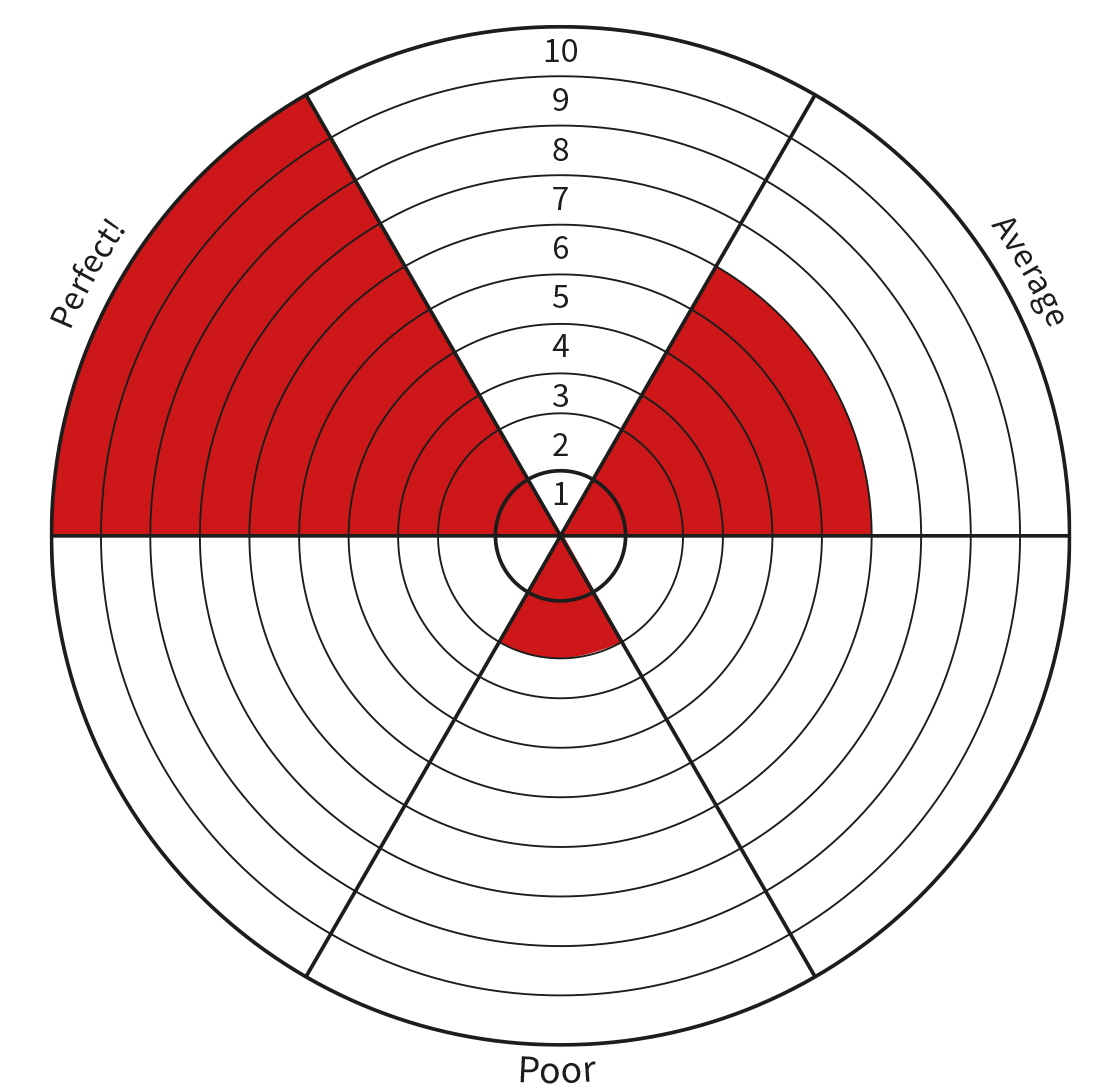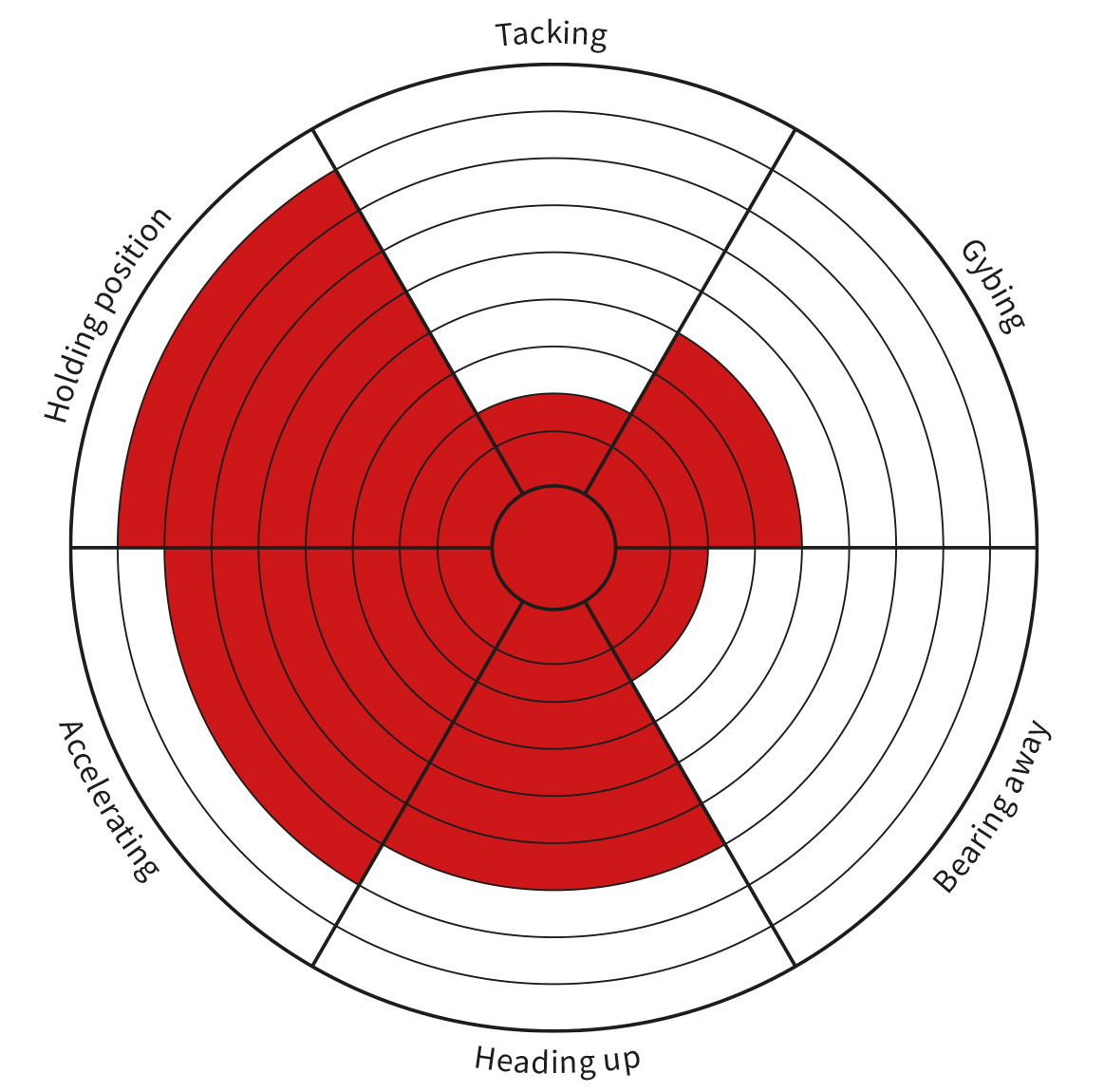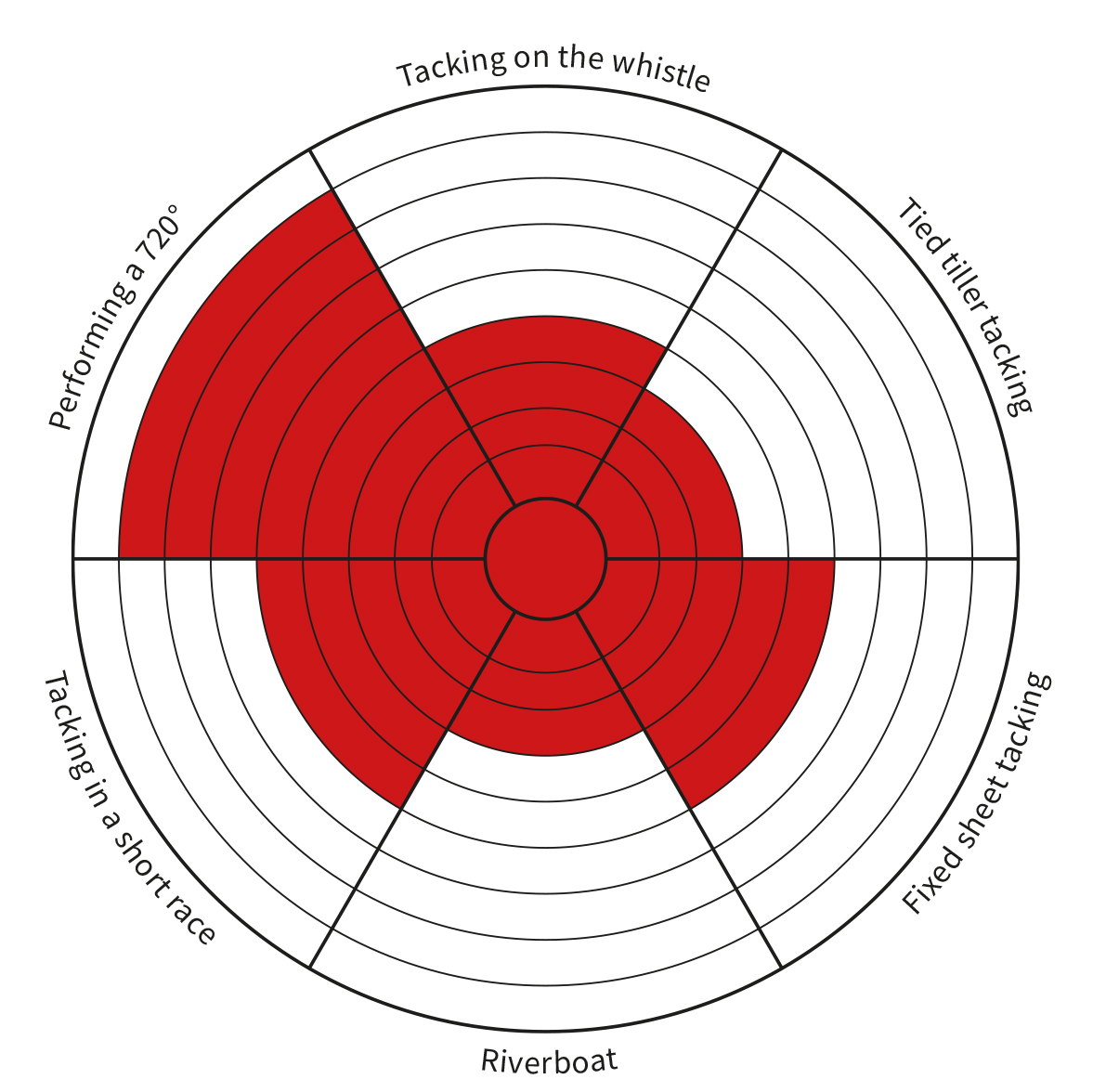Target & Goal Setting With Jon Emmett
Book Extract
This book is for all those busy people who still want to be successful and need to optimise every hour of every training session without a coach!
Not many people complain about having too much time on their hands. Sailing, like any sport, rewards hours of quality training. We want to make sure that any time we invest in our sailing is used as effectively as possible. One of the reasons why it is so hard to improve your racing is that sailing is such a time-intensive sport. It could take you many hours to arrive at the sailing venue, rig up the boat and get out on the water, whilst a runner or cyclist may be able to commence a great training session the moment they close their front door.
The aim of this book is to help everyone improve their skills in the shortest possible time, and this requires focus. When you go on a journey, to reach your destination you need to look at the map and plan the best route, not blindly head off in any direction. This means that you need to (assess yourself to) know where you are, and also know where you need to get to (your goals).
Coaching is a huge part of professional training – having someone to help with the analysis and give a second opinion – but for many sailors access to a professional coach is something that happens rarely or not at all and this is where this book can help.
After more than twenty years of coaching it made sense to put all of the most effective training exercises and key ideas into a book which will undoubtedly help you get towards the front of the fleet whether your goal is Club, National, International or even Olympic level. The same proven techniques will help you wherever you are in your sailing career.
Why are Goals so Important?
Well firstly, if you don’t have a clear target, how do you know when you have achieved something? Humans by nature like a sense of achievement: think of all the opportunities to win badges, certificates and awards when we are young (or indeed as we get older the targets, such as getting a degree, become bigger and better).
They provide motivation: if something is too easy (‘my aim for today is to clean my teeth’) then there is very little feeling of accomplishment, or if something is too hard (or perhaps impossible, like running your first marathon in under two hours) it will lead to disappointment, and repeated failure can be hard to bear. The idea is to set yourself a rewarding challenge, something you can achieve if you really put your mind to it.
The purpose of this book is to break your overall sailing goal down into small and manageable mini-goals. After all it is impossible for a human to eat an elephant in one go but if divided into small enough pieces and given enough time, then, anything is possible.
Things which are measured are more likely to be achieved, as at the end you have proof that you achieved them (or not). This is why taking detailed records of the weights you lift is so important – so you can see where you came from, what you have achieved and what you need to do next. Try to learn skills in the easiest possible way, using a method than helps you remember what you learnt. For example, in my book Tactics Made Simple I use character names (like Terry Tacker who tacks on every shift) as lots of research has shown that this is a very good way of remembering things.
Visual aids are also an excellent way of seeing information at a glance: not only is it much clearer than just rows and columns of numbers, but it is more rewarding to look at!
The key to improving your overall sailing ability is to work on your weaknesses. A good way to understand where your weaknesses lie is to compare your abilities in a number of areas in a single visual form.
The issue is: we tend to enjoy what we are good at and are therefore more inclined to practise it (and get even better at it) and dislike what we are not good at (and therefore not practise it and not improve at it). To improve our overall ability effectively, our training routines should be the other way round – focusing on our weaker areas. However, there may be some events where you would choose to specialise, for example preparing for a championship which will be held only in strong winds due to the expected sailing conditions. This may mean that you could, for that season, neglect your light wind training, if only the result in this one regatta was important to you.
Dartboards
Filling out a dartboard is very simple. You start from the middle and colour one or more sections depending upon how comfortable you feel with that skill: 1 = very low skill (no colour would be no skill at all!) and 10 would be perfect. It is not really how you choose to rate yourself (which often shows more your confidence rather than your competence) but the differences in how you rate yourself in the individual areas.

How to fill out a dartboard
You can, of course, make as many or as few dartboards as you like, but the more specific and the more detailed they are the better. So, consider Chapter 2: Boat Handling: we could create a dartboard showing six key areas for all the boats we are racing. Perhaps having recently changed to a trapeze boat we are struggling to tack, gybe and bear away, but we are already confident to hold position, accelerate and head up.

An example of a boat handling dartboard
Now we have identified some of the areas we want to work on (and boat handling is often a very good example of an issue we could expect when changing to a new class) we can go into more detail. So, then we look at tacking, as it (along with bearing away), we decided, is the weakest area and therefore where we can get some rapid improvement. This dartboard clearly shows the specific areas we need to work on.

An example of a tacking dartboard
Now we can finally choose some actions to help us. This is so much more effective than just going sailing and ‘practising boat handling’. The final dartboard shows some exercises that we can do to help our steering, body movement and sheeting. Those exercises which require us to do lots of tacks, such as riverboat, can be more useful than tacking on the whistle as they require more thought, whilst tacking in a race can hide your weakness as, even in a short race, boatspeed can help compensate for your poor tacks.

An example of a tacking exercise dartboard
Most useful is when you do very detailed exercises like tying your tiller (so that you cannot steer using the rudder), fixed sheet tacking (so that you cannot steer using the sheet) or bum in the boat (not in this dartboard, but where you cannot move your body) which soon identify where the biggest issues lie and therefore where your time should be spent. Time management is a very important skill in modern life, and you should keep careful records of your training to make sure it is paying off.
So good luck, train hard and enjoy the rest of the book.
Blank dartboards can be downloaded here.
© Not to be reproduced without written permission from Fernhurst Books Limited.
Coach Yourself to Win is written by gold medal winning coach and 4 times world champion in his own right, Jon Emmett. It takes you through the 12 fundamental elements of successful sailing.